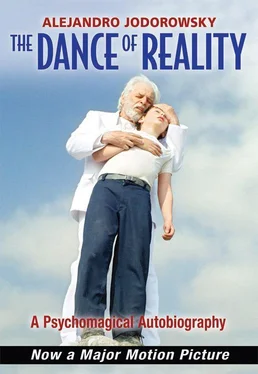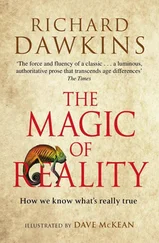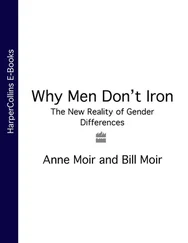“The priest!”
“What did this priest do to you?”
“When I went to confess to prepare for my first communion, he asked me if had sinned mortally. Since I did not know what a mortal sin was, I said no. He insisted, asking me if I had touched myself between my legs. I had done it without knowing it was wrong. It gave me great shame, and I lied with a resounding ‘No.’ He kept on insisting, and I kept denying it. I left there and received the sacred host feeling that I was a liar, in a state of mortal sin, condemned forever.”
“My poor child, you have kept on denying for forty years. You have to understand that this priest was sick, that you did not have to feel guilty: it is normal for children to investigate their bodies and touch themselves; the sex organs are not the seat of evil. I will remove the useless ‘No!’ from your head. ”
I had the woman write “NO!” on masking tape with a black marker and stuck it to her forehead. I asked her to lie on her back on a table and shook my outstretched hands all around her body as if severing invisible bonds, shouting, “Go away, you stupid priest; leave this innocent child alone! Out! Out!” Then, acting as if it was a great effort, I began to tear the tape with the “NO!” off her forehead. I pretended that it was very difficult. I exclaimed, “It has deep roots! Push! Push it out! Help me, girl!” She began to push, screaming in pain. Finally, I triumphantly pulled off the masking tape. She covered her face with her hands and burst into tears. When she raised her head, she no longer had the tic. I told her to go out to the garden and burn the “NO!” I told her to take some of the ashes, dissolve them in honey, and swallow it. She did. Her head shaking never returned.
This successful “operation” opened up a vast field of experimentation. I came to the conclusion that everything that Pachita, machis, Filipino doctors, quacks, and shamans achieve in a primitive, superstitious setting could also be achieved, without deception or illusory effects, with patients born into a rational culture. Just as the subconscious accepts symbolic acts as realities, the body also accepts as real the metaphorical operations to which it is submitted, even if reason rejects them.
My experiences with what I had called “initiatory massage” served as a basis. When I began studying the body, considering it as a terrain in which the subconscious manifests, I saw that to a certain degree some people moved with gestures that I perceived as “shining.” By contrast, the depressed people, entrenched in their problems, lacking projection, made gestures that were “opaque.” It occurred to me that the past, with its painful memories and the principal fears of being, of loving, of creating, of living, accumulated like a crust covering the skin. I remembered the Mexican “cleansings,” in which the witch would rub the client’s body with a handful of herbs to purge him of his misfortune. I thought that an even more profound psychological effect could be achieved if, instead of lightly rubbing the skin, I scraped it, just as one does with a piece of metal in order to remove the oxidized layer. I acquired a synthetic bone spatula, about twenty centimeters long and two wide, the kind that is used to fold paper, and began to scrape my naked client. This went on for three hours. After being entirely scraped, people felt reborn; many of the old fears that they had carried stuck to their skin dissolved away. But, although it is true that this technique made the patient “shine,” it must be admitted that after a while new sediments accumulated that gradually brought back the “opacity.” However, some progress had been made. The person with feelings of abandonment that caused so many unresolved problems now received physical contact, an indispensable complement to the mental and emotional contact that a psychoanalyst provides.
In the early 1970s I lived in Mexico City, where trains rolled along the broad Avenida Chapultepec. One morning I saw a group of curious people surrounding one of these vehicles. They were motionless, expressionless, staring transfixed at the front wheels. I made my way through the crowd: the vehicle had trapped a man. It was impossible to remove him manually. A wheel had pinned him at the waist. He was pale, strangely calm. He had abandoned all hope, given himself over to the designs of Providence, awaiting the capricious Red Cross, which could take hours to arrive. What could we do? A crane would be needed to move the heavy train. I felt an immense compassion for the poor man, but then I was overtaken by a peace that I will dare to call, in a good way, abnormal. It was like falling into the ocean of time, where the seconds were like eternity. I knelt beside the injured man, staining my pants with his blood, and took his hand gently, so that he would feel that he had company. He looked at me with gratitude, and we remained there tranquilly, I do not know how long, until the nurses, firefighters, police, and the crane arrived. Before I let go, he squeezed my hand, speaking a thousand silent words with that contact. I could do no more for him. I walked away slowly. When I was a child and cried terrified in the darkness, desperately calling for my parents, who had gone out to the cinema, all I wanted was a loving touch to keep me company. That would have allowed me to accept being devoured by the shadow. The simple company of another, in adverse situations, is as necessary as life itself.
When Bernadette died in the plane crash and our son Brontis came to see me after identifying the remains of his mother in the morgue, I could not find words to comfort him. All I could do was to take him in my arms and put his right ear over my heart so that he could hear it beating. He stayed there, I do not know if it was for an hour or two or three. These sad events taught me to keep the patient company, to give all of my time in a limited time, to put my heart into the task, knowing that its beats are mediators between the human and the divine.
Once the person was scraped, the past removed, and the vital energies recovered — the energies that would drive him or her to embrace the present — I followed up with a session of skin stretching. The deviant, egotistic individual “I” tends to separate from the world and lives under the skin. And in its zeal for possession, it makes that skin into a defensive border. Feeling insecure, afraid of emptiness, it unwittingly draws the skin inward, making it into a corset. In the old days infants were wrapped up, perhaps with the secret fear that their uncontrolled movements would cause them to “spill out.” I felt that I had to teach the skin to expand itself, restoring its elasticity in order to unite it with humanity and the cosmos. I started grabbing parts of skin and stretching them as much as possible. The skin of the back was elastic and stretched surprisingly well; likewise the skin of the chest and abdomen. I stretched the eyelids, cheeks, forehead, scalp, the skin of the neck, arms, legs, feet, hands. The scrotum could be opened up like a fan, sometimes stretching almost as far as the navel. Stretching the outer labia of the vulva, removing them for a few moments from their desire to be absorbed, produced an intense state of freedom. At the end of the session, the patient was no longer separated from the world, knowing that his or her limits were out beyond the stars.
The next step was to massage the bones. We have a tendency to forget our bone structure: the skeleton reminds us of death. It appears impersonal to us, macabre, inanimate. However, it is a living and responsive structure. In contrast with stroking the skin or putting pressure on the muscles to loosen them up, this involved kneading the bones, exploring their forms, their interstices, their corners. Every phalanx was taken into account, every vertebra, every rib, the long bones, the joints, the different parts of the skull, the orbits of the eyes, the structure of the pelvis. At the end of the massage the patient would stand up and dance, moving like a cheerful skeleton.
Читать дальше












